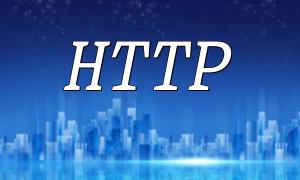In web application development, processing HTML and XML documents is a common task. As a widely used server-side scripting language, PHP offers powerful parsing tools, including DOMDocument and SimpleXML, which make handling these documents more convenient and efficient.
DOMDocument is one of PHP's built-in classes, used for parsing and manipulating HTML documents. It provides a rich set of functionalities that allow developers to load, navigate, and modify elements in an HTML document.
The basic steps to parse an HTML document using DOMDocument are as follows:
1) Create a DOMDocument object: $doc = new DOMDocument();
2) Load the HTML document: $doc->loadHTMLFile('example.html');
3) Retrieve elements from the document: $elements = $doc->getElementsByTagName('div');
4) Loop through elements and retrieve their attribute or text content:
foreach ($elements as $element) {
echo $element->nodeValue;
}
5) Modify the element's attribute or text content: $element->setAttribute('class', 'new-class');
The advantage of DOMDocument is that it provides comprehensive HTML parsing and manipulation capabilities, allowing you to easily retrieve and modify elements, attributes, and text content. However, keep in mind that DOMDocument loads the entire HTML document into memory, which can lead to performance issues when dealing with large documents.
SimpleXML is another built-in PHP class, specifically designed for parsing and manipulating XML documents. Compared to DOMDocument, SimpleXML is more lightweight and features a simpler syntax, making it suitable for quickly working with XML data.
The basic steps to parse an XML document using SimpleXML are as follows:
1) Load the XML document: $xml = simplexml_load_file('example.xml');
2) Retrieve elements from the document: $elements = $xml->xpath('//element');
3) Loop through elements and retrieve their attribute or text content:
foreach ($elements as $element) {
echo $element->nodeValue;
}
4) Modify the element's attribute or text content: $element->attribute = 'new-attribute';
The key benefit of SimpleXML is its simple, intuitive syntax, allowing developers to quickly navigate and manipulate XML documents. You can use the xpath() method to find elements by their path and access or modify attributes and text content through object properties. SimpleXML also supports convenient methods like addChild() and addAttribute() for adding child elements and attributes.
When selecting an HTML/XML parser, it's essential to choose based on specific needs and the characteristics of the document being processed.
If you're working with large HTML documents, DOMDocument is the recommended choice. It provides a full range of features, but be aware that it may consume more memory and CPU resources.
If you're dealing with smaller XML documents or simple HTML documents, SimpleXML is a better option. It has a simpler syntax, a lower learning curve, and offers more flexible operations.
Additionally, PHP offers other parsers such as XMLReader and XMLWriter, which provide different parsing and manipulation methods that can be chosen based on specific needs.
PHP's HTML/XML parsers are essential tools for web development. DOMDocument and SimpleXML are the most commonly used parsers, each suited for different types of documents and use cases. DOMDocument is ideal for working with complex HTML documents and offers extensive functionality, though it may require more resources. SimpleXML, on the other hand, is perfect for quickly parsing smaller XML or HTML documents with simpler operations.
By becoming familiar with these parsers, developers can significantly improve their efficiency in processing and manipulating web documents, leading to faster and more effective web application development.
Related Tags:
HTML








